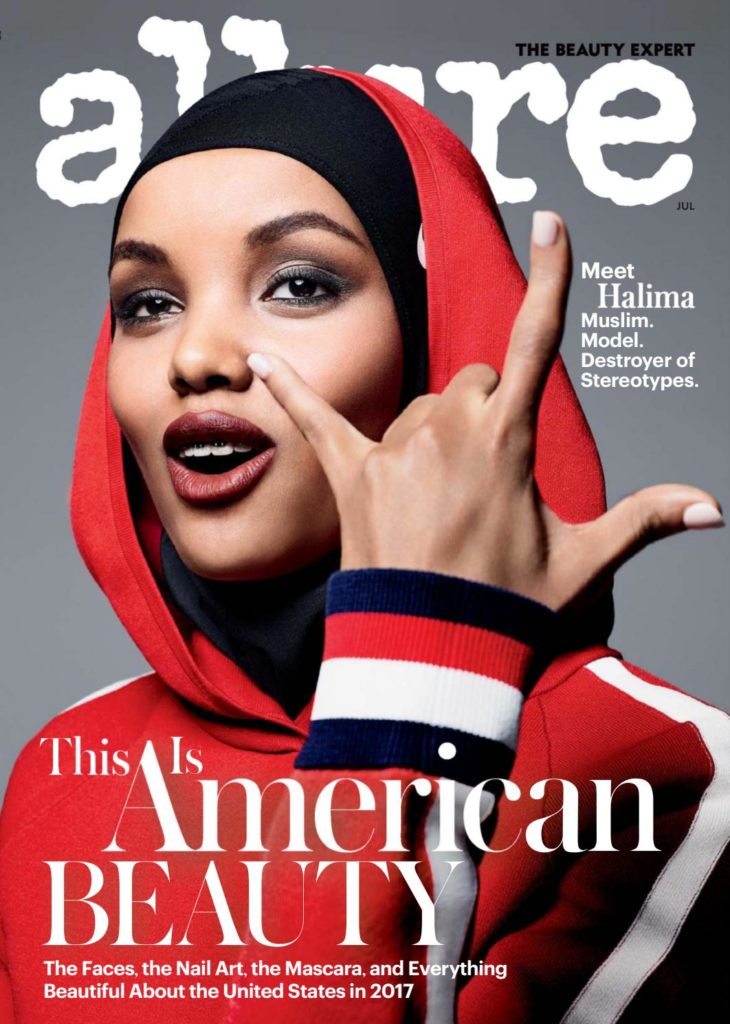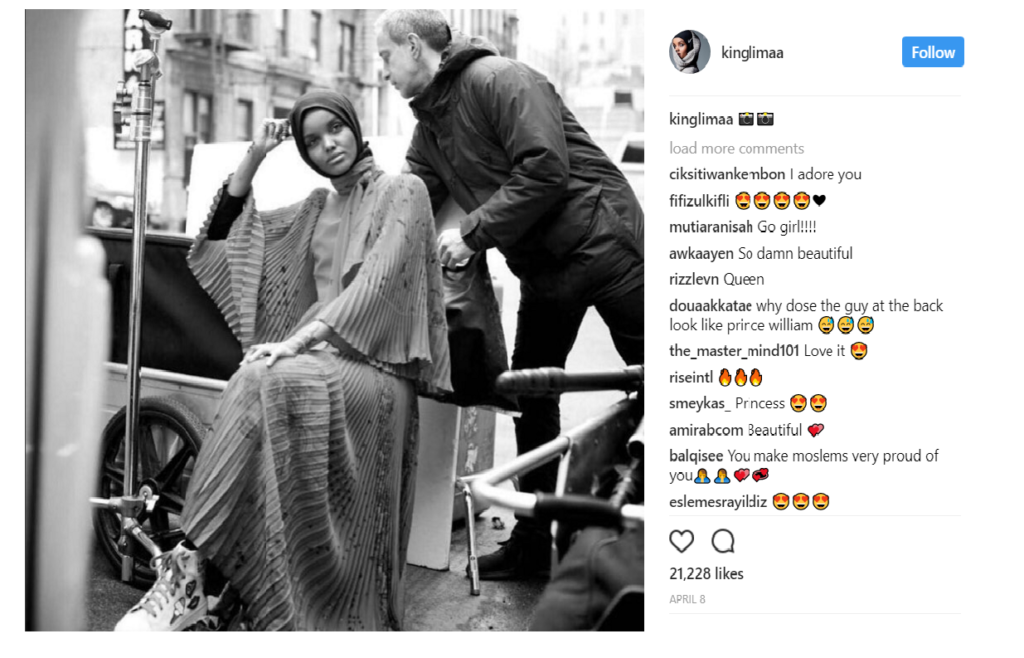
On the one hand, Halima Aden’s story is one of lore, a classic tale of the American Dream: Born into a Kenyan refugee camp, before moving with her family to the unfamiliar culture of St. Cloud, Minnesota at the age of 6, Aden is now enjoying a modelling contract inked with IMG Models (and all the fashion shows, campaigns, runways, and growing number of fans, followers, and fame that come with it).
Rags to riches. A girl who came here with next to nothing now a hot commodity of the fashion world.
But on the other hand, it’s so much more:
It has become increasingly easy to forget about such stories in a world focused on divisions; a world where “American Dream” has become an increasingly muddled topic.
Aden made headlines in 2016, while attending school as a freshman at St. Cloud State University, when she reached the semifinal round of the Miss Minnesota USA pageant.
It wasn’t, of course, simply because she reached the semifinal round. The headlines were dedicated to the fact that she was the first Somali-American to do so, and that she did it while wearing a hijab.
A culture of…
Aden, whose 20th birthday is coming up in September, has come to represent young women who don’t necessarily fit the traditional model mold; she has become the face not only of American Eagle (et al), but the face of a much larger issue.

And, specifically, young Somali and Muslim women forced to contend with increasing amounts of adversity.
Especially as Aden’s hometown of St. Cloud remains at the center of controversy: It’s been less than a year since a local restaurant posted a “Muslims get out” sign. Multiple anti-Islam billboards (2016, 2017) have showed up in the area as well.
Then there were then-candidate Donald Trump’s anti-Somali comments made during his brief Minnesota campaign stop.
Minnesota has been staunchly in support of immigration and refugee programs: Governor Mark Dayton has remained vigilant in his support of not only existing East African and Muslim communities, but of those incoming, looking for a fresh start; a new beginning.
Minnesota’s Somali population, the largest in the United States, has been a prominent and growing piece of the local landscape: Restaurant and business owners, community leaders and politicians (Aden was not the only Somali-American “first” from Minnesota: Ilhan Omar was recently elected the first Somali-American legislator in the country). Minneapolis remains at the forefront, but smaller cities like St. Cloud (Aden’s parents still live in Waite Park) have also seen a rapid influx of Somali immigration.
We’re not here to thrust the responsibility of representing why the current climate of fear and distrust – especially towards people of Muslim faith and immigrants/refugees from predominantly Muslim countries – is so very misguided onto Aden’s shoulders.
(Even if it still ends up that way.)
We can’t really tiptoe around it, either. As the hijab has become one symbol (of many) used to identify “differences” in culture and religion and identity, those wearing them have faced varying amounts of harassment as a result.
Aden, for her part, has taken it in stride. As she tells Allure, she’s simply wearing what she feels most comfortable in:
“Society puts so much pressure on girls to look a certain way… I have much more to offer than my physical appearance, and a hijab protects me against ‘You’re too skinny,’ ‘You’re too thick,’ ‘Look at her hips,’ ‘Look at her thigh gap.’ I don’t have to worry about that.”
And the part that gets forgotten is that this doesn’t have to be the narrative.
In a time where we are struggling socially and politically to find common ground, Aden’s story is one of refreshing clarity: a stunningly beautiful reminder that this country, at least at times, can still be what it was meant to be.
The American Dream is universal, meant for anyone with a vision, an idea, a goal. This statement is far too meta to actually matter on its own, but what’s important is that it doesn’t really look that different than it did at the turn of last century: It’s the same “Give me your tired, your poor/Your huddled masses yearning to breathe free” that is supposed to apply today.
The importance of Aden’s ascent to success is as much about her story, her journey, and her identity, as it is about reminding everyone that we are as much the same as we are different – we all came from somewhere (where America’s “melting pot” identity came from in the first place).
A model dream
But, at the end of the day (at the end of the runway?), Aden is a 19-year-old model living out the fantasy of so many young girls: She’s an international fashion model. She’s graced the cover of Harper’s Bazaar, Allure, and Vogue. She’s walking runways and hanging out with the young, rich, and super-famous.
It should, and hopefully someday will, be as as simple as that. She’s living the dream: A girl from small town Minnesota who made it big. She’s doing these things in the way that she wants, dressed in the way she wants, representing herself in the way she feels most comfortable.

Inclusivity, yes. Breaking down barriers, always. Chasing, and living, an oft-elusive dream? At the same time. The focus remains on this, on the fact that the U.S. can still be the country where dreams can come true, where anything is possible, where a fresh start and new beginnings can lead to a smile as wide as Halima Aden’s.
Because the best part about this story is that it doesn’t need motivations political, social, or otherwise to be beautiful: It can also just be a story of one St. Cloud girl, who overcame much to achieve her dream. This alone is something to be celebrated.
Follow along:
















